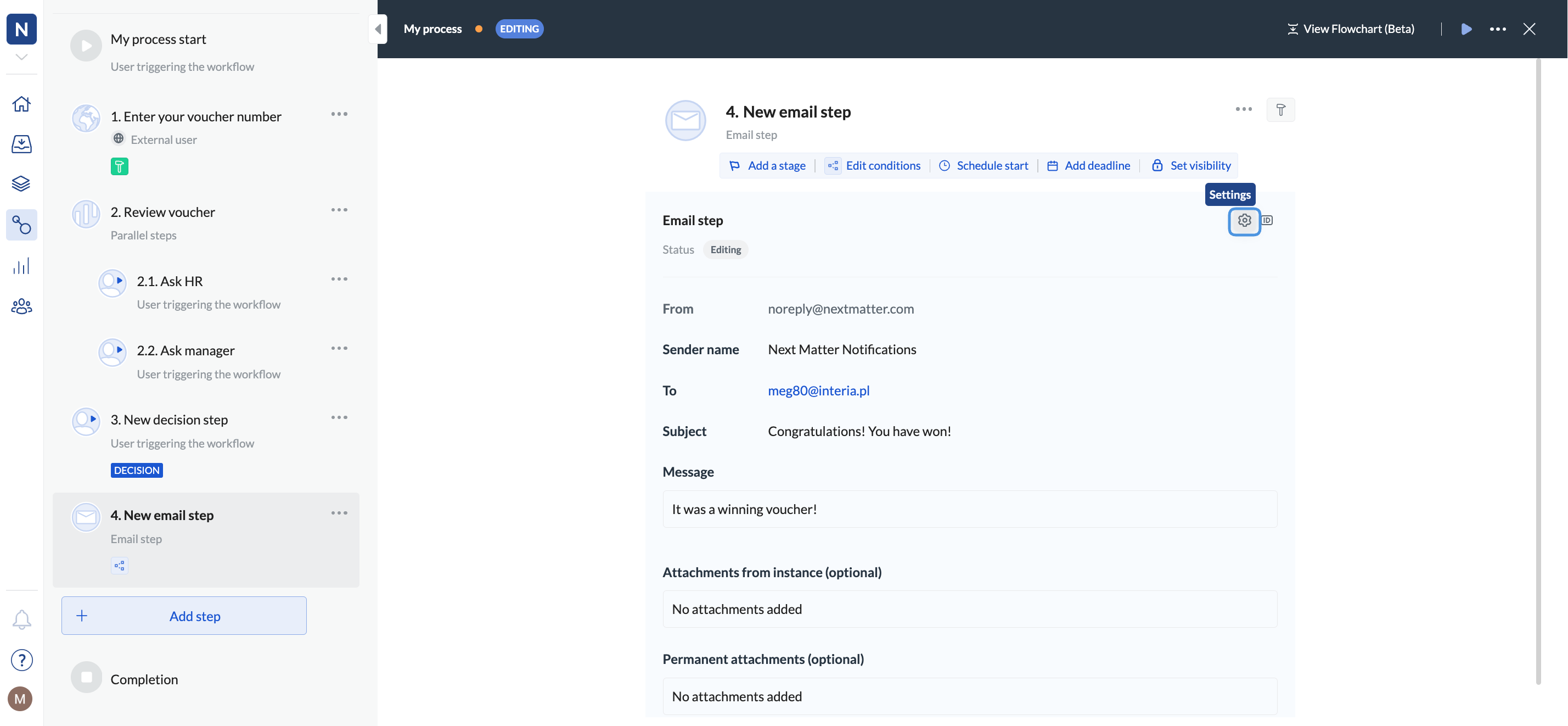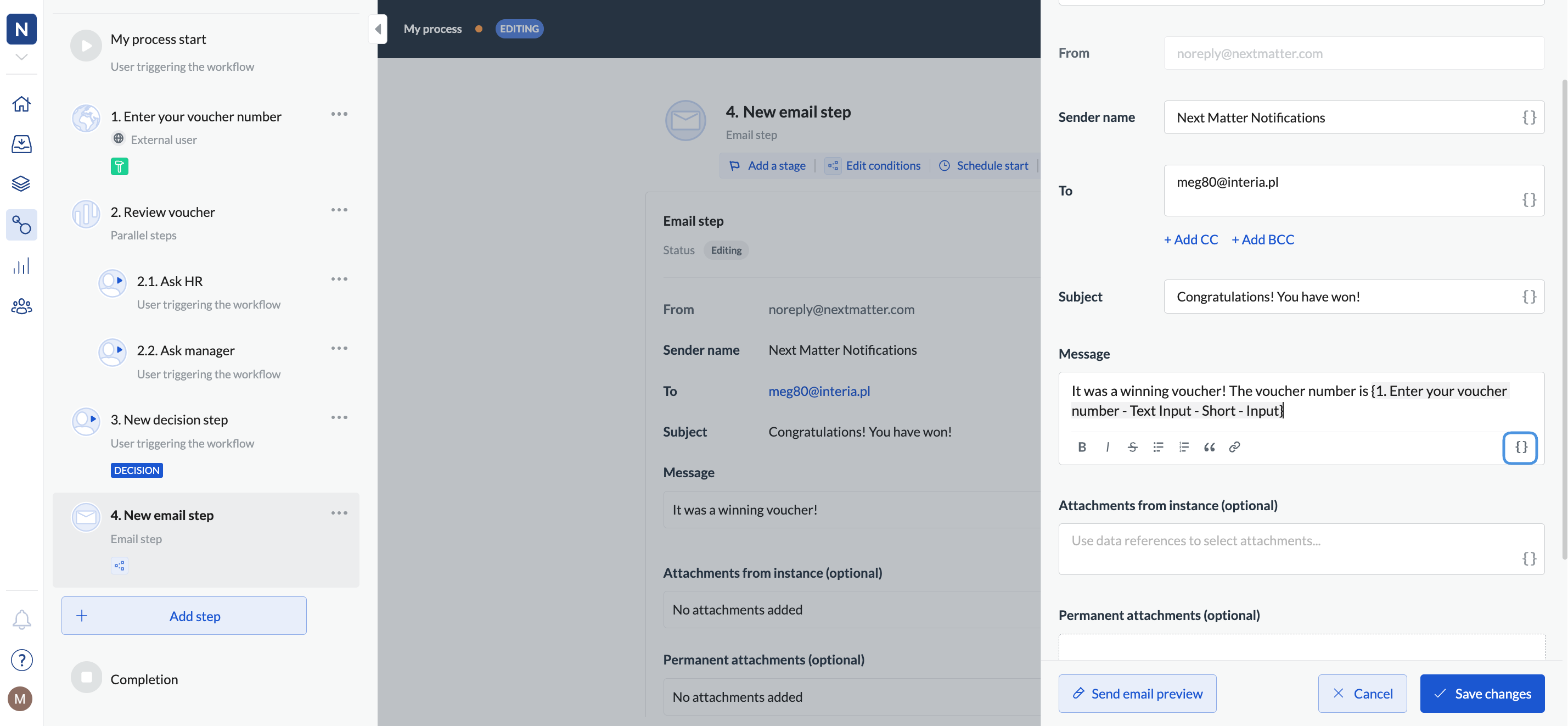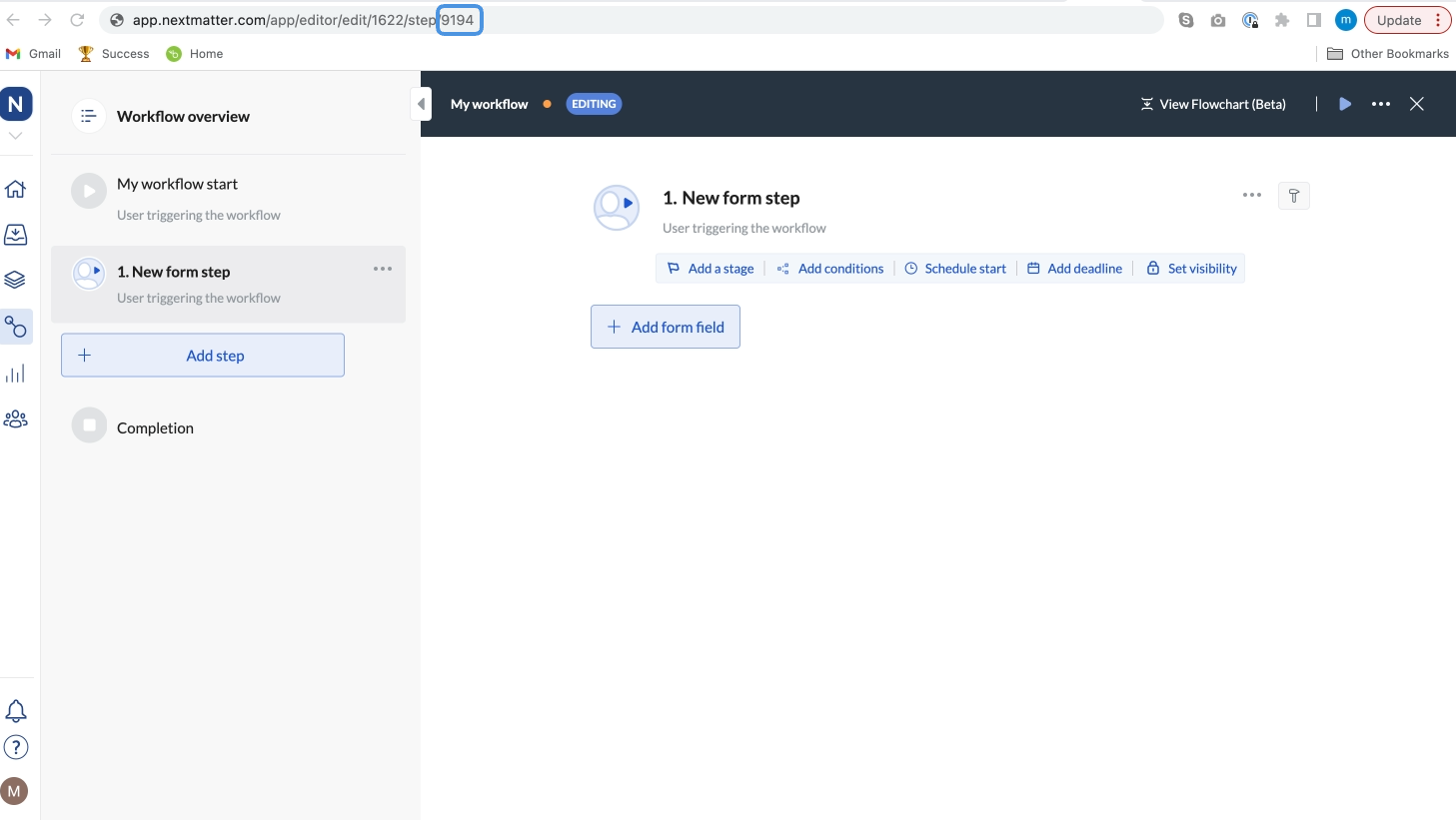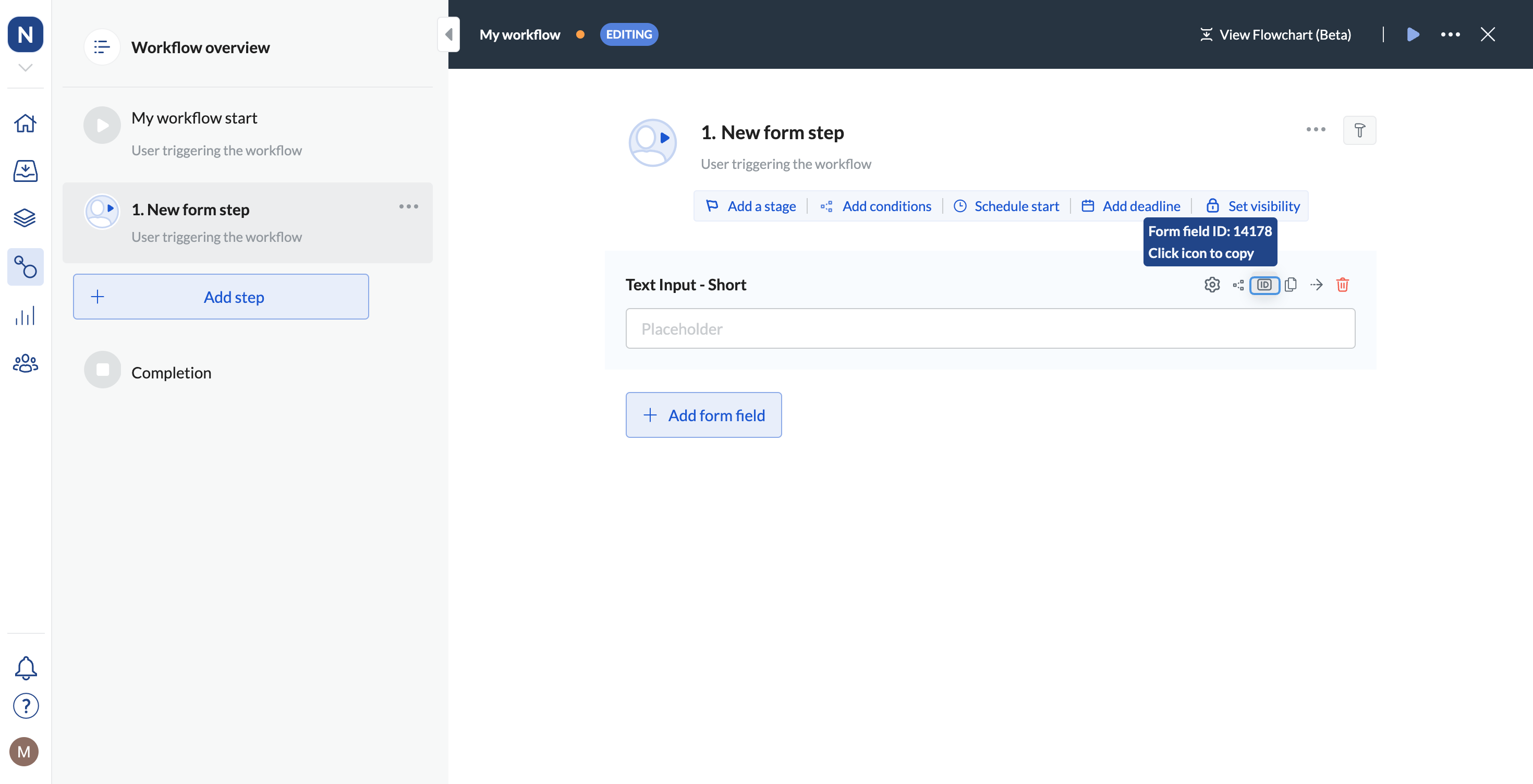About data references
Data reference is a dynamic placeholder in your workflow. When a step in the workflow is activated, the data reference will come from the information given in a previous step and be provided as a value. For example, if someone enters their name in step one, step two might use a data reference in an email where the name that was provided in step one is used. You might use data references when you integrate with external tools and want to send data to the tool and extract the information back later, or send data from one workflow to another. You can also define your own data references based on response values (for example, a sum of a calculation) available in an external tool.Watch a video tutorial
Add a reference to the form field
You can add references to form fields that are radio buttons, instructions, or drop-downs. To do that:- On the form screen, click the settings icon.

- Click the braces icon.

- Select the reference you want to add from the dropdown. The dropdown is organized so that you can see which data can be extracted from which step.
- Click Save changes.
Referencing long text inputs
When referencing long text inputs in integration steps, use the JSON-formatted reference rather than the plain-formatted reference. This ensures that special characters such as linebreaks and quotes are encoded correctly.Referencing images
When you use data references to transfer images or files (for example, from one form to another), make sure you’re using the same form fields. For example, if you uploaded an image with an image upload form field, and you want to populate a form with a data reference of this image, make sure the field you’re populating is an image upload form field. Trying to populate a file upload form field with an image data reference might cause errors on step completion. Likewise, using a file form field data reference to fill in an image form field won’t work.Find IDs to reference form fields or steps
Get the step ID
Get the step ID
- In your left-hand navigation, click the Workflows icon.
- Hover over the follow-up workflow and click on the menu icon.
- Click Edit workflow.
- Click the step to which you’d like to send data.
- Copy the step ID. It’s the last number in the URL you see in your browser.

Get workflow ID
Get workflow ID
You can get the ID by clicking the workflow and copying the number from the URL in your browser.

Get the form field ID
Get the form field ID
- In your left-hand navigation, click the Workflows icon.
- Hover over the follow-up workflow and click on the menu icon.
- Click Edit workflow.
- Click the step to which you’d like to send data.
- Click the ID icon for the field to which you want to copy data.
- Copy Form field ID.

FAQs
What is the "first result" data reference?
What is the "first result" data reference?
This reference applies to user variables (variables generated from the API response data) and helps unwrap the data from webhooks and integration steps. Read more about the first result reference…
What is the "user who completed email" reference?
What is the "user who completed email" reference?
This resolves to the email of the user who completed the step. As the assignee can change based on specific configuration (as is the case for conditional assignee, automatic delegation, or out of office settings), this field reflects the actual completer rather than the original assignee.

